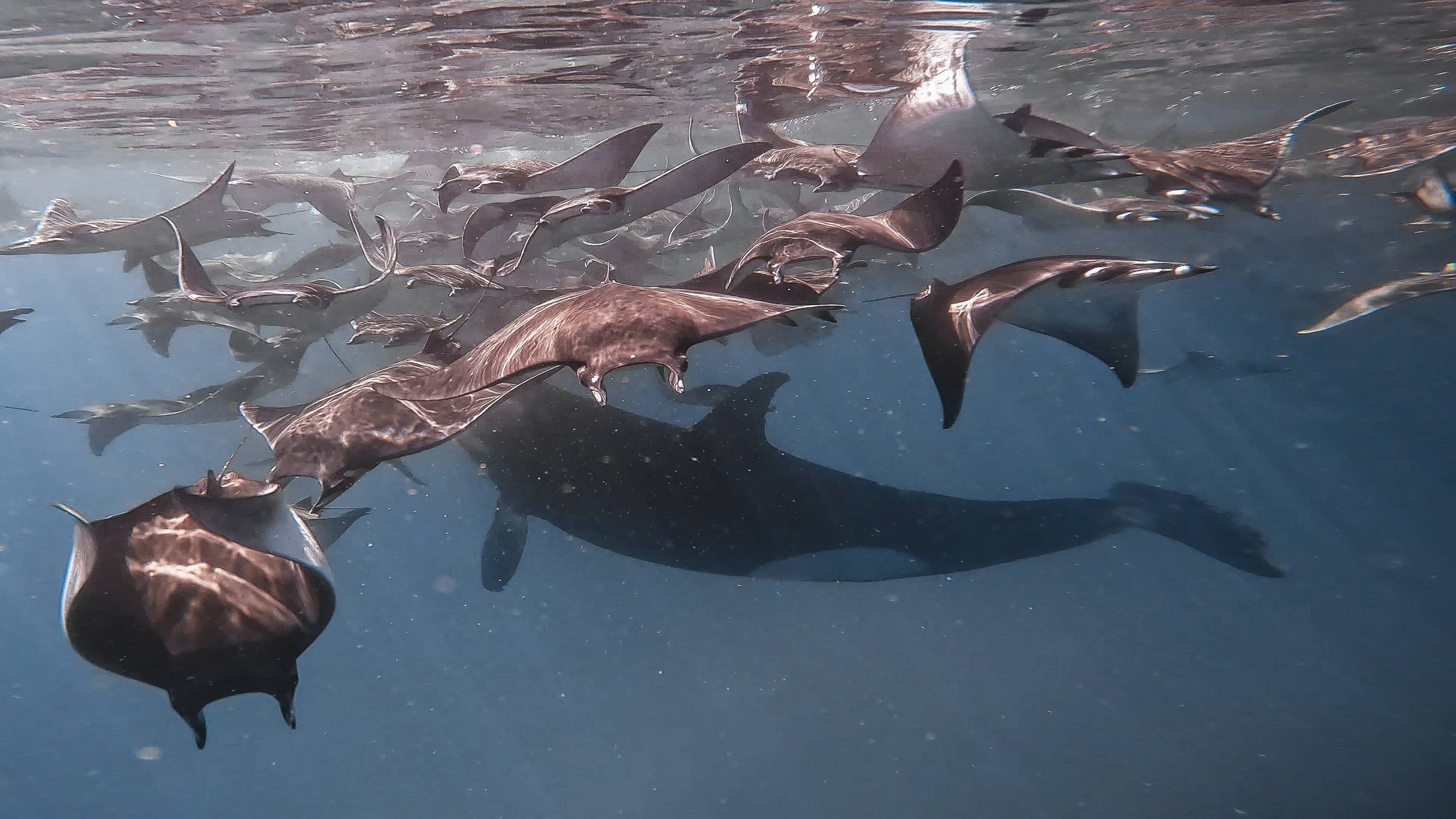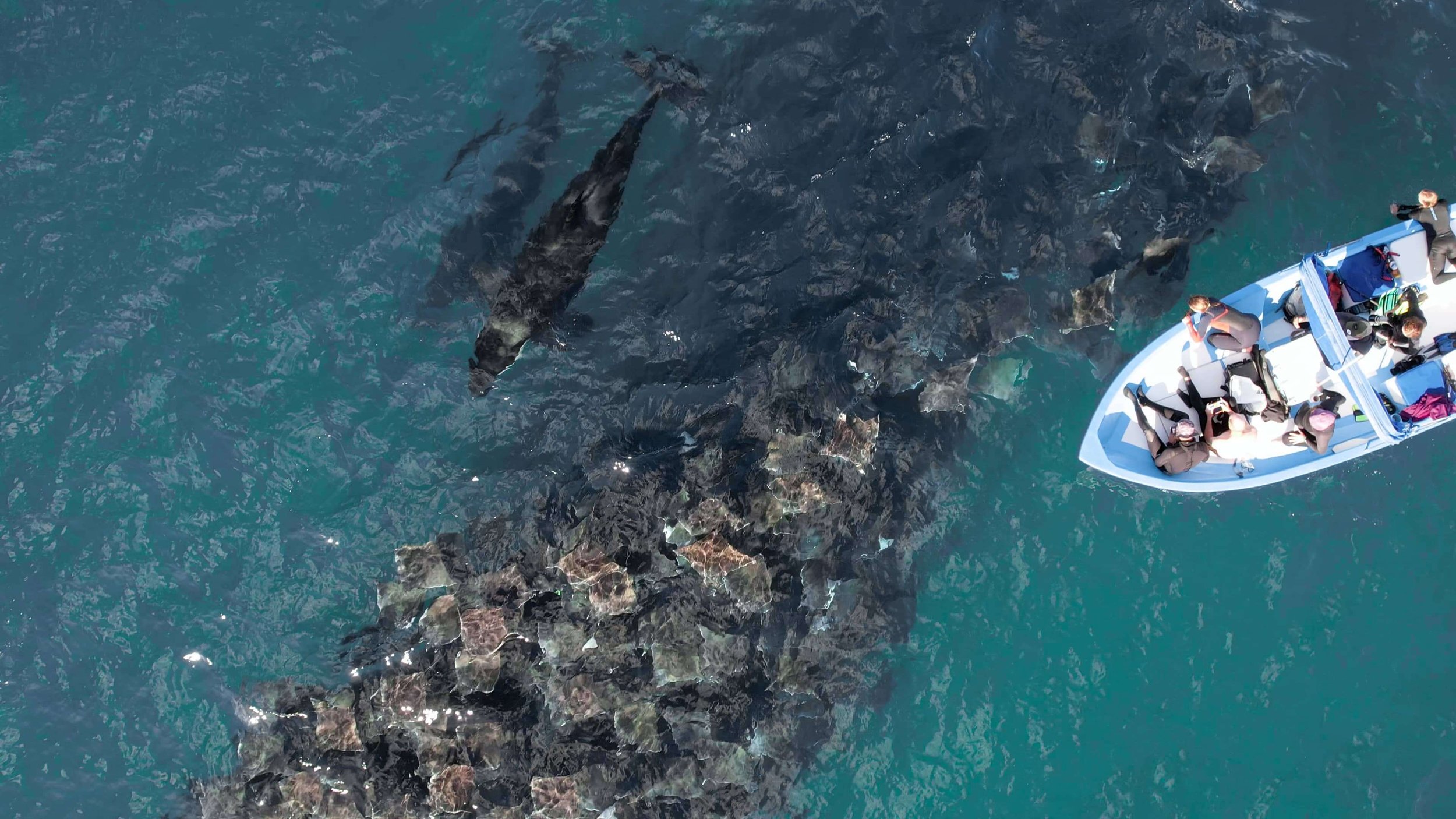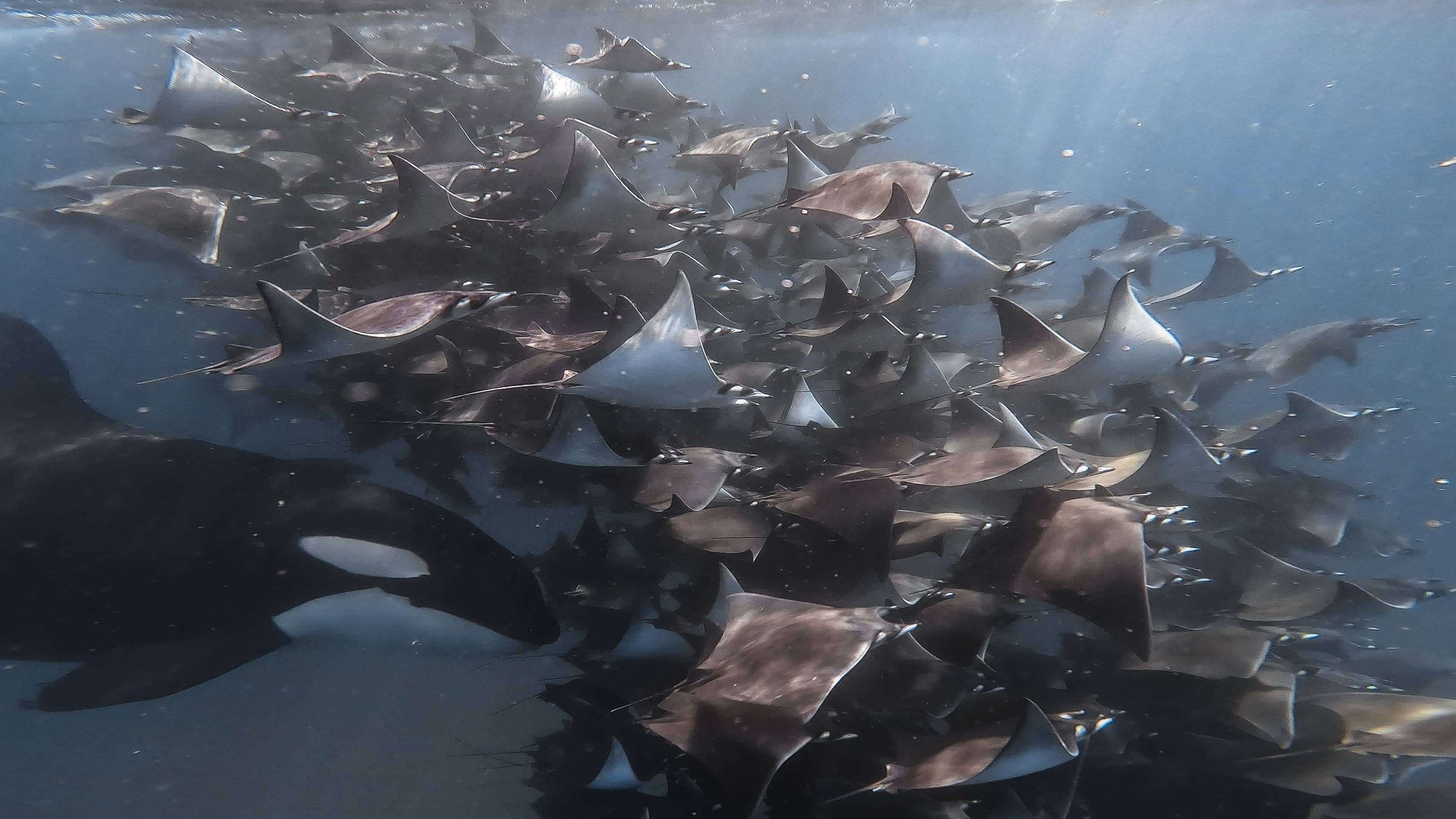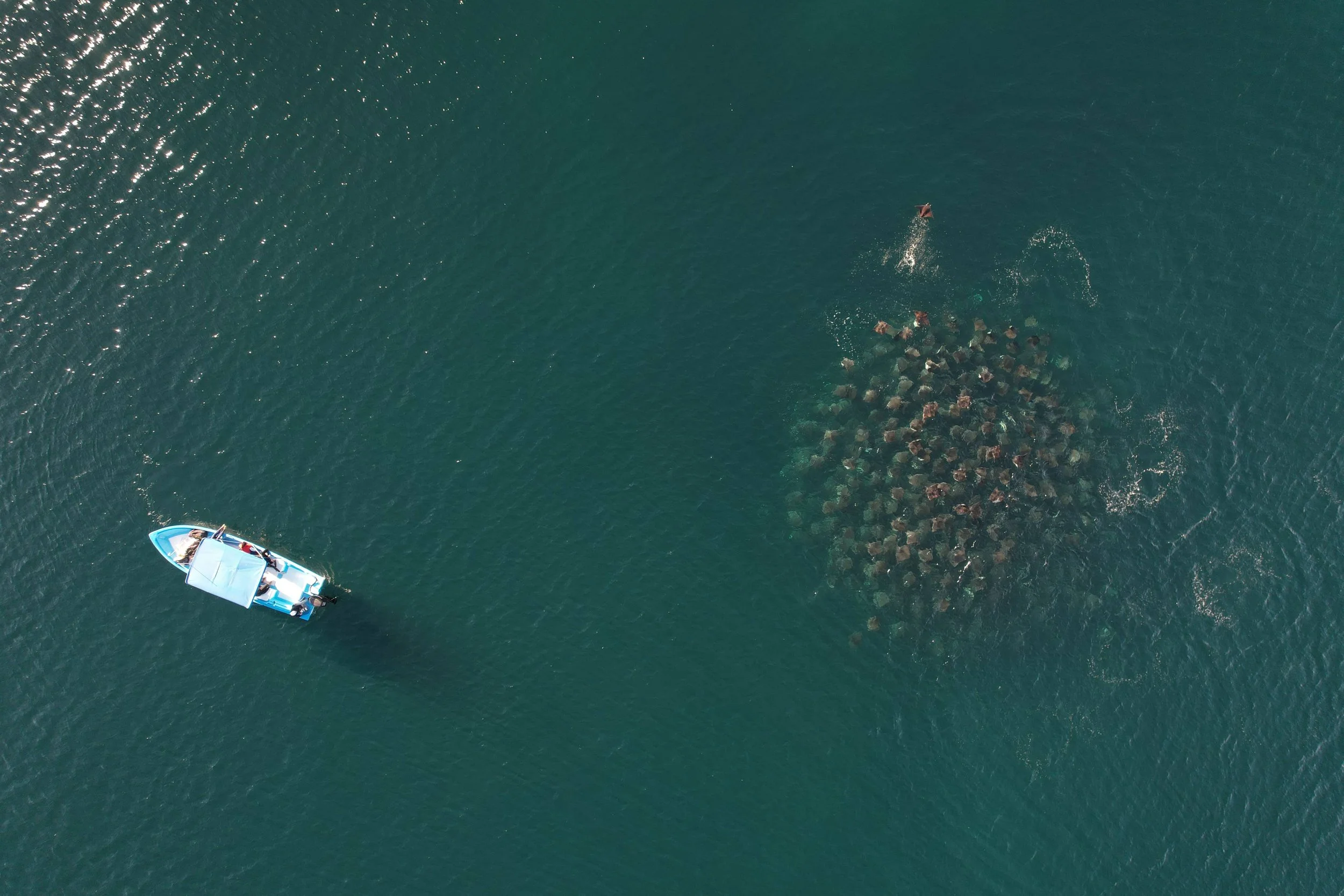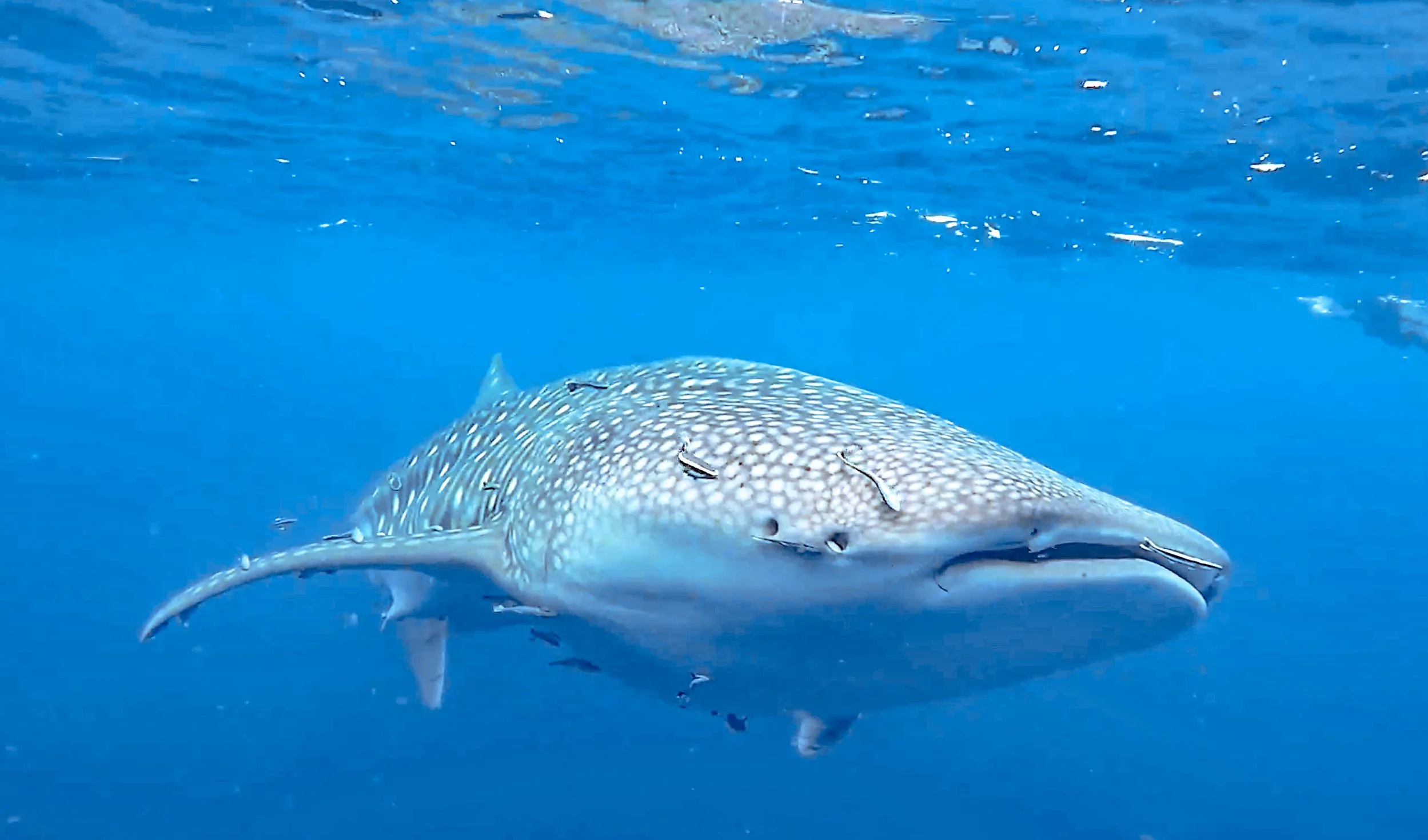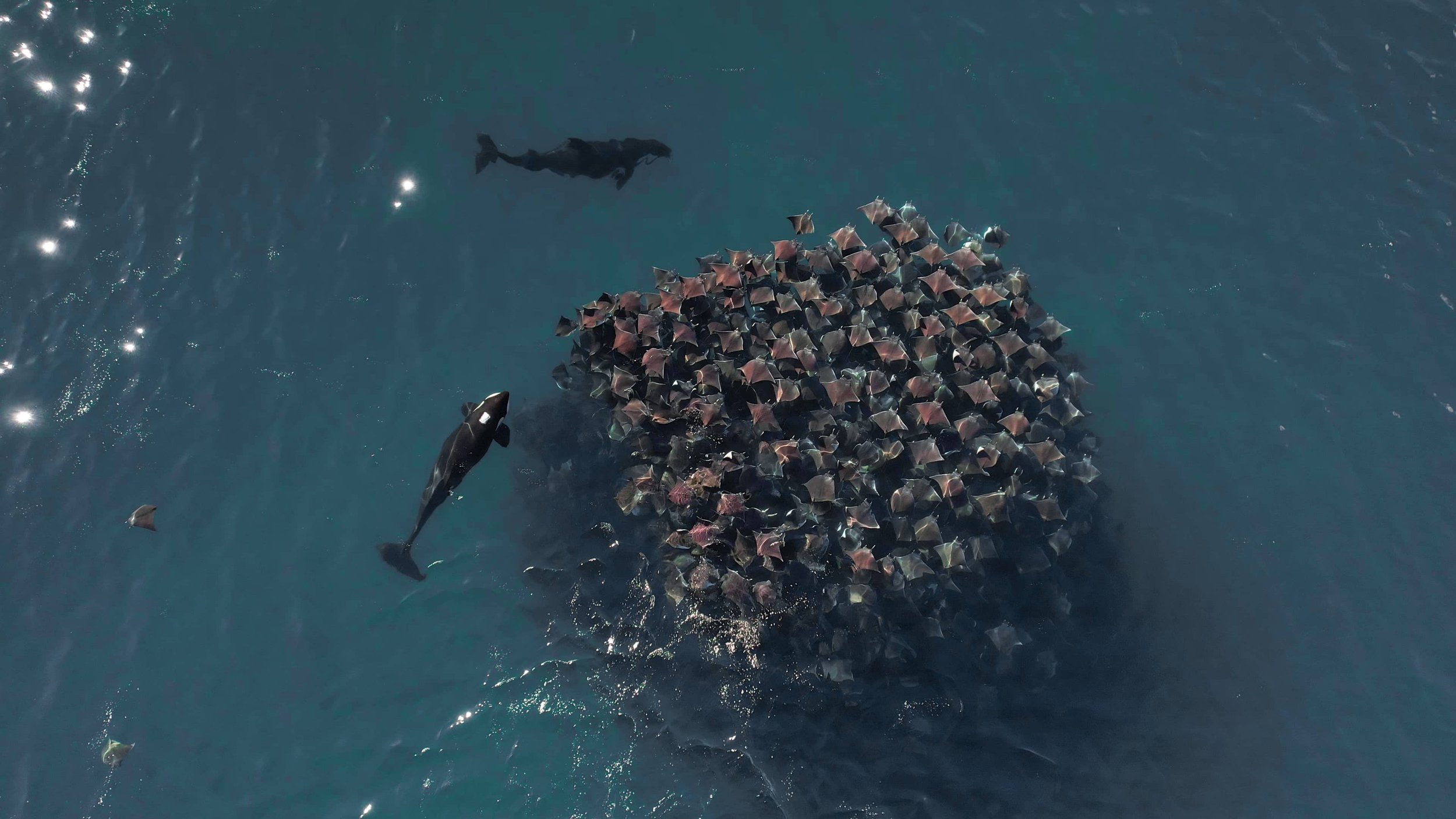
Mobula Ray Migration
Sea of Cortez
APRIL - JUNE
Want to join us?
Expedition description
Twice a year in the Sea of Cortez, you can witness with your very own eyes, the biggest mobula ray migration in the whole world! During mobula season, tens of thousands flock in the cold upwellings of nutrient-rich water in search of food and luuuurve!
Join us on our Mobula Ray Migration expedition in Baja California Sur! You'll get the chance to witness the incredible migration of these flying tortillas as they swim in huge groups called "fevers". We will take you on an unforgettable journey, swimming alongside these magnificent creatures in their natural habitat.
Mobula rays have a slow reproduction rate of 1 pup every 1-2 years, so although we see them in their tens of thousands during mobula season, they are still on the vulnerable list.
Tour Information…
-
Most common species:
· Mobula Rays (Munkiana, Bent Fin, Spinetail, Sickle Fin, Oceanic Manta)
· Dolphins
· Sea Lions
· Sea Turtles
Also chance of seeing:
· Whales - Humpback, Blue, Fin, Sperm, Brydes
· Orcas
· Pilot whales
· Whale Sharks
and many surprises!!
-
Breakfast, Lunch and Dinner mentioned in the itinerary.
All nights accommodation (double occupancy, single occupancy upgrades sometimes available)
All Boat Tours and Activities mentioned (3 days on the 5D/4N, and 5 days on the 7D/6N)
Guide and Captains
Photos and Videos
-
Flights/transfers to La Ventana/La Paz
Extra food & drinks not mentioned in itinerary
Tips/gratuity - we are not fans of the forced tipping culture. So, if you feel inclined to leave a tip because you had an amazing time and you feel we did an exceptional job, the team would be delighted and grateful for your generosity :)
-
Full snorkel gear - Snorkel, Mask, Fins, Weights and Weight Belt, Wetsuit (Recommended 3mm long - water temperatures averages range from 26°C/78°F to 30°C/86°F) We do not provide any diving equipment.
Warm clothing - it can get cold in the early morning and with the wind.
Waterproof clothing - if it’s windy the water can splash into the boat
Sunscreen/protection - it can also get really sunny and warm during the day - please bring biodegradable, as normal sun protection is damaging for the reefs.
Sea sickness pills - if you are prone to nausea - it can get quite wavey on the boat.
A good attitude, this is nature, there are no guarantees with what we can see, we will use our experience and expertise to put you in the best places possible for sightings but there is always a chance that you won’t see anything.
-
EARLY BIRD PRICE (to Sep 1st):
5 Day w/ 3 boat days = Base Rate 2,800 USD7 Day w/ 5 boat days = Base rate 4,000 USD
-Prices are per person. Capacity: Min 4, Max 6.
-Upgrades available upon request & subject to availability. -
If you are on a group of 6 or more, contact us directly to send you our group prices!
-
On the 5 day expeditions you will have 3 boat days, and for the 7 day expeditions you will get the following extras:
· 2 extra boat days
· Evening/Night trip (weather dependant)
· Extra afternoon activities
Tap the + to expand
want to join us for the mobula ray migration?
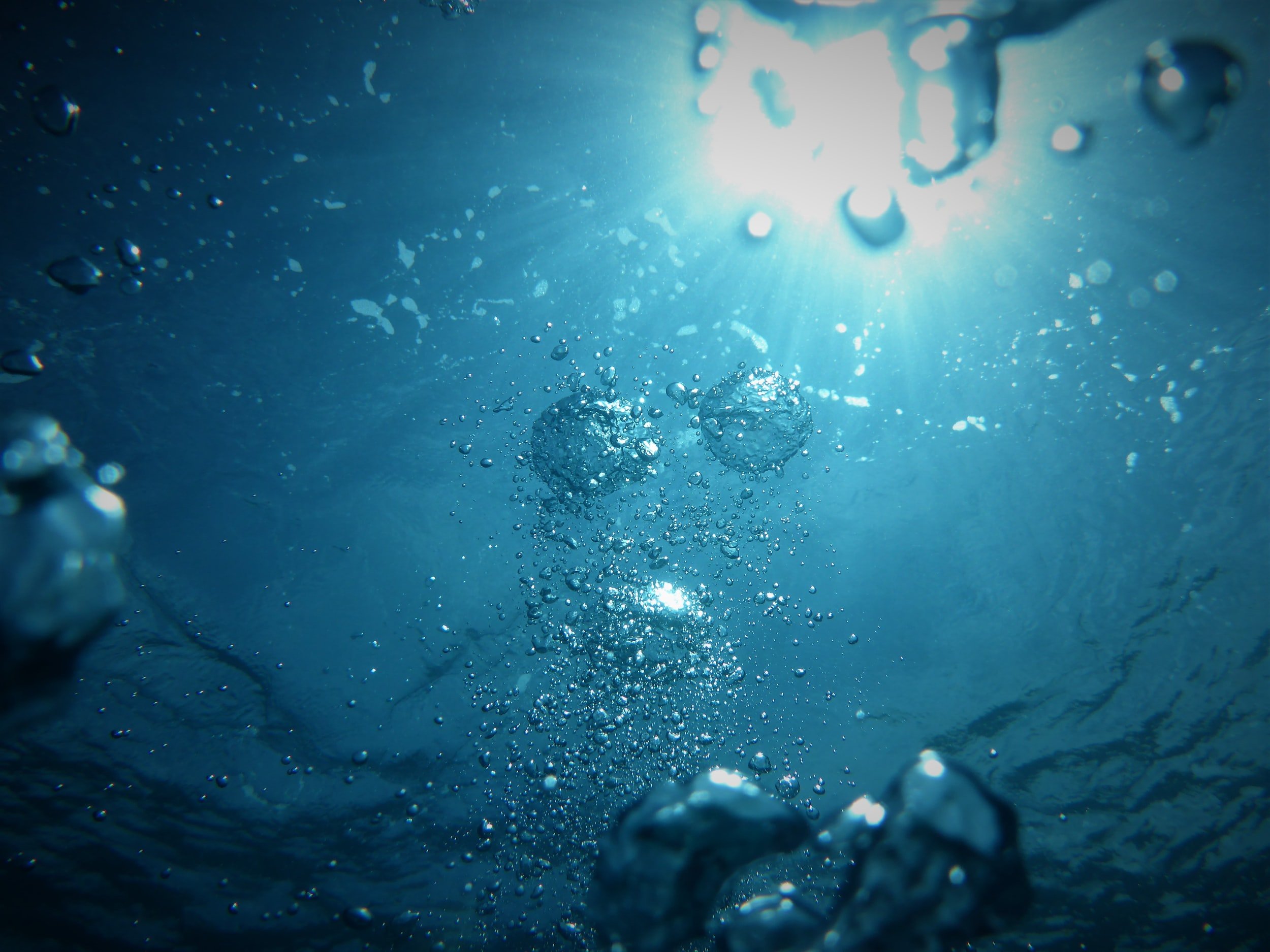
Dates available 2026
Main mobula season: April - June
-
May 3rd - 7th (6 spaces available)
May 10th - 14th - (5 spaces available)
May 17th - 21st - (4 spaces available)
May 24th - 28th (2 spaces available)
May 31st - June 4th - SOLD OUT
June: 7th - 11th - (6 spaces available)
June 14th - 18th - SOLD OUT
June 21st - 25th - (6 spaces available) -
May 3rd - 9th (6 spaces available)
May 10th - 16th - (6 spaces available)
May 17th - 23rd - (6 spaces available)
May 24th - 30th (4 spaces available)
May 31st - June 6th - (3 spaces available)
June: 7th - 13th - (4 spaces available)
June 14th - 20th - SOLD OUT
June 21st - 27th - (6 spaces available) -
Early in the season is the best time for seeing whales.
Later in the season has the better visibilty
Mobula rays are seen throughout but historically end of May is the best
Orca and Sperm Whales can be seen throughout the season but are elusive and show up when they want - you can’t predict when they will show.
Please feel free to send us a message to be put on the waiting list!
Mini mobula season: Mid-November to the end of January. Contact us for custom group expeditions.
Itineraries
* Please note that the itinerary may change slightly due to weather, current marine life sighting reports, and other factors out of our control.
-
Day 1
· Arrive, meet and greet in La Ventana
· Check in to accommodation
· Welcome dinner
Day 2-4
3 boat days
Typical Boat day is as follows:
· Breakfast
· Sea safari
· Lunch
· Evening activity
· Dinner
Day 5
· Time to leave :(
-
Day 1
· Arrive, meet and greet in La Ventana
· Check in to accommodation
· Welcome dinner
Day 2-6:
5 boat days
Typical boat day is as follows:
· Family style breakfast
· Sea safari
· Lunch on the boat
· Afternoon activity or rest
· Family style dinner
Day 7
· Breakfast
· Time to say bye until the next time :(
Want to join us?
useful Information
-
Apr 23-27°C / 73-80°F
May 25-28°C / 77-82°F
Jun 27-29°C / 80-84°F
-
*Averages
Apr: Day 28°C/82°F - Night 15°C/59°F
May: Day 32°C/90°F - Night 17°C/63°F
Jun: Day 34°C/93°F - Night 19°C/66°F
-
Baja has a sunny, dry climate and only sees about 25cm/10 inches of rain in an entire year. Most of this rain falls from late August through September. The rest of the year we barely see rain.

Anything Else?
Logistics: The 2 nearest Airports to La Ventana are LAP La Paz (45 minutes drive) and SJD San Jose del Cabo (2.5 hour drive).
Please note this is a swimming/snorkel adventure and we will be in and out of the water all day, so please bring appropriate clothing and dive equipment.
Please feel free to bring your camera, although we do our best to take the perfect photos and videos for you, it’s always fun to take your own perspective.
Want to join us?
FAQs
Frequently Asked Questions
-
The best places to witness the Mobula Migration is La Ventana, then followed by La Paz, Cabo San Lucas, and various locations in the Sea of Cortez.
La Ventana is the area with the most sightings of mobula rays in the last few years, offering prime viewing opportunities both from boats and, in some cases, from the shore. -
The peak time to experience the Mobula Migration in Baja is from late April to early July. With peak numbers mid to May to early June.
During these months, the mobulas can be seen leaping out of the water in large numbers, creating an incredible spectacle. Visibility is at its best from June onwards -
Yes, you can swim or snorkel with the mobula rays during their migration, always respecting their behaviour and having ethical interactions with them. Our expert guide will teach you about them, making it more of an educational experience, and will show you best practices following our ethos of respectful interactions.
-
Yes, it is very safe to swim with mobula rays. They are not aggressive and are more likely to be curious or shy around humans. However, as with all wildlife encounters, it’s important to maintain a respectful distance and follow the guidelines provided by our expert guide.
-
Mobula Migration tours typically last 6 hours for day tours and 8-10 hours for expeditions. Our tours and expeditions usually involve boat trips to areas where the mobula rays are most active, trying to avoid the crowds when possible, which sometimes means going further than other operators.
-
In addition to mobula rays, you might also encounter dolphins, sea lions, various species of fish, sharks, various species of whales/cetaceans, occasionally orcas and many surprises!! The Sea of Cortez is known for its rich biodiversity, so there's always a chance to see something amazing.
-
That depends. The Mobulas are shy animals that get spooked easily when other animals (or humans) are in the water with them. It's very common that the Mobulas will swim to deeper waters and disappear if they feel threatened, therefore, our expert guide will always assess the behavior of the mobulas before allowing freediving with them. If after assessing the situation, the mobulas feel comfortable with our presence and the guide decides it's possible to do some dives, they will brief you on the correct practices. If you don't follow the instructions and the mobulas feel threatened by you, we will have to stop freediving and continue only snorkeling.
-
Yes, mostly. Responsible tour operators like us adhere to eco-friendly practices to minimize the impact on the mobula rays and their environment. This includes limiting the number of boats and snorkelers, maintaining safe distances, and ensuring that no one touches or disturbs the rays.
Unfortunately not all the operators follow these practices, that's why we always encourage travelers to make responsible decisions when it comes to picking an operator for any ocean activities that involve wildlife. -
Yes, our tours adhere to strict environmental guidelines to minimize our impact on the marine ecosystem. We prioritize sustainable practices to ensure that the Mobula Migration season can be enjoyed for years to come.
-
Yes, private tours are available during our day trips, and our expeditions for those who prefer a more personalized experience. Private tours offer more flexibility and the opportunity to enjoy the migration at your own pace, often with more intimate and exclusive encounters. However, due to the high demand for the mobula season, this may be subject to availability. If this is something you are interested in, we recommend you to book months in advance.






